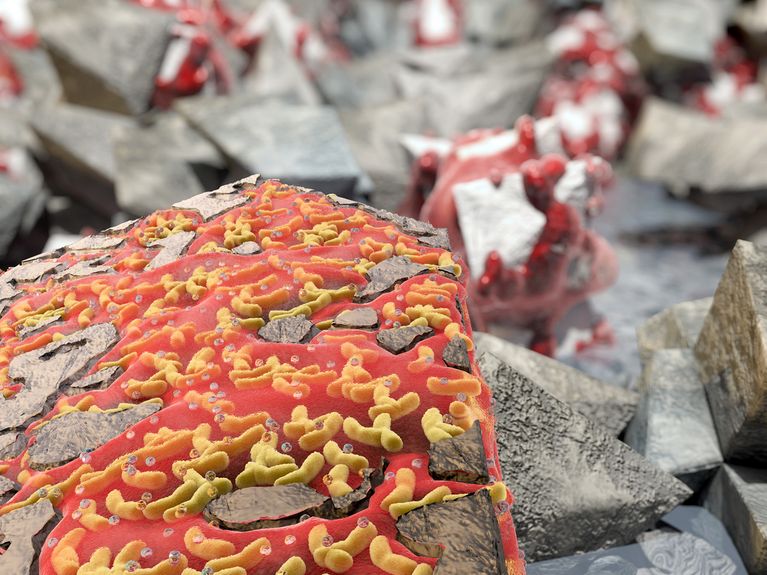Biomining
Biomining: Metal Extraction with Bacteria

Bakteria mobilize copper from Chalkopyrit. Photo: HZDR / 3DKosmos Sander Münster
Without them, our modern world would be inconceivable: metals. Take the light metal aluminium in a car body, rare earth metals such as yttrium in plasma screens or copper in electrical leads. And global demand increases continuously due to the rapid development of new technologies. In principle, there are sufficient amounts of metals; the problem is to make them available.
Often, metals occur only in low concentration in various ores. Katrin Pollmann from the Helmholtz Zentrum Dresden-Rossendorf (HZDR) and her team develop new processes for extracting even these faint traces of metal. To this end, the researchers look also into hitherto neglected deposits. They use bacteria to extract metals from the dumps of abandoned mines or from electronic scrap by way of recycling. The process of extracting metals using micro-organisms is called biomining.
The HZDR researchers search for suitable bacteria for exploiting copper deposits. "Copper often is thinly dispersed within the ores and difficult to extract by traditional extraction methods", says Katrin Pollmann. The majority of the copper within the ore is firmly bonded with sulphur, as in the mineral chalcopyrite (see image). These so-called metal sulphides are insoluble under normal conditions. Therefore, the pure metals can be extracted only by complicated chemical processes. Yet Pollmann's bacteria can extract copper from the ore simply by their metabolism. This process is called bioleaching. "Especially when extracting small amounts of copper, this process is particularly efficient and, compared to traditional methods, comparatively environment-friendly", says Pollmann. She currently investigates also whether bioleaching can be used for extracting rare earth metals.
Another micro-biological process being intensively researched by the HZDR scientists is so-called biosorption. Here, the researchers utilise the special surface structures of bacteria to create filter materials. "The surface of the bacteria consists of envelope proteins, which form regular nano-structures and efficiently and selectively bond with metal ions", says the scientist. In nature, the micro-organisms use this to protect themselves from pollutants. Pollmann and her colleagues already use the principle to extract arsenic and uranium from waste water.
Katrin Pollmann is the team leader of the Biotechnology group at the Helmholtz Institute Freiberg for Resource Technology (HIF). The institute is part of the HZDR and closely co-operates with the Technical University Bergakademie Freiberg. The HIF researches and develops technologies that are to help in ensuring the long-term supply of strategically important technology metals to the industry.
Weblinks:
Helmholtz Institute Freiberg for Resource Technology
Biotechnology group at the HZDR
Latest press releases:
Readers comments